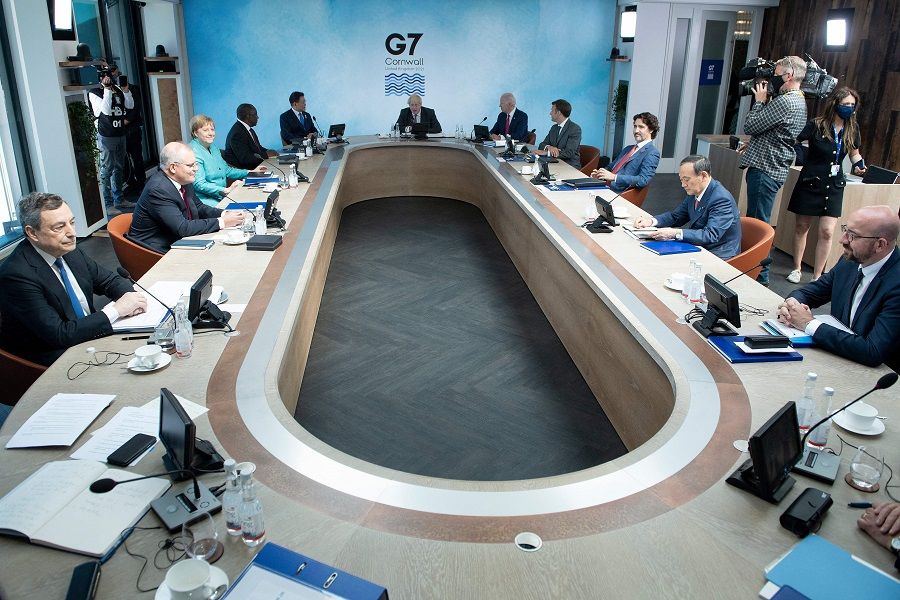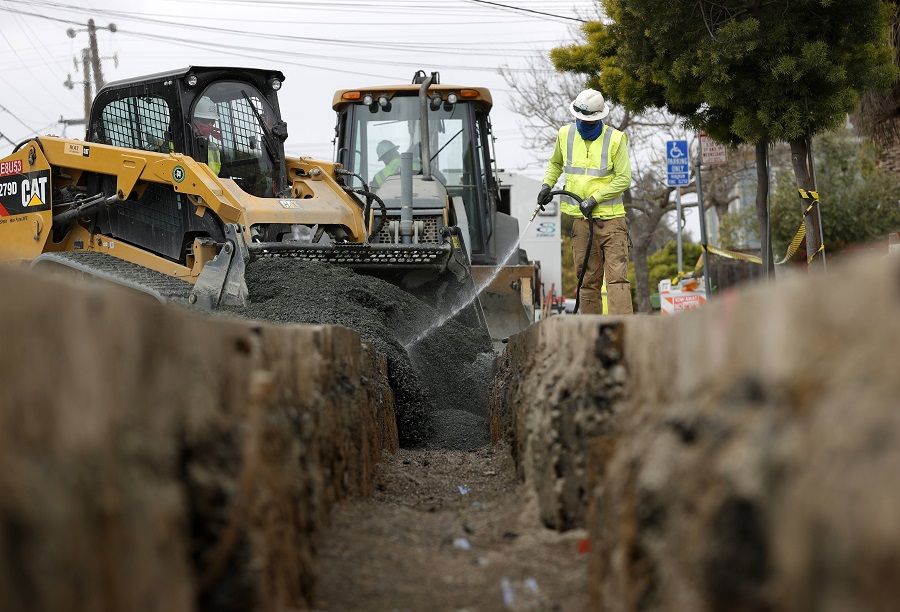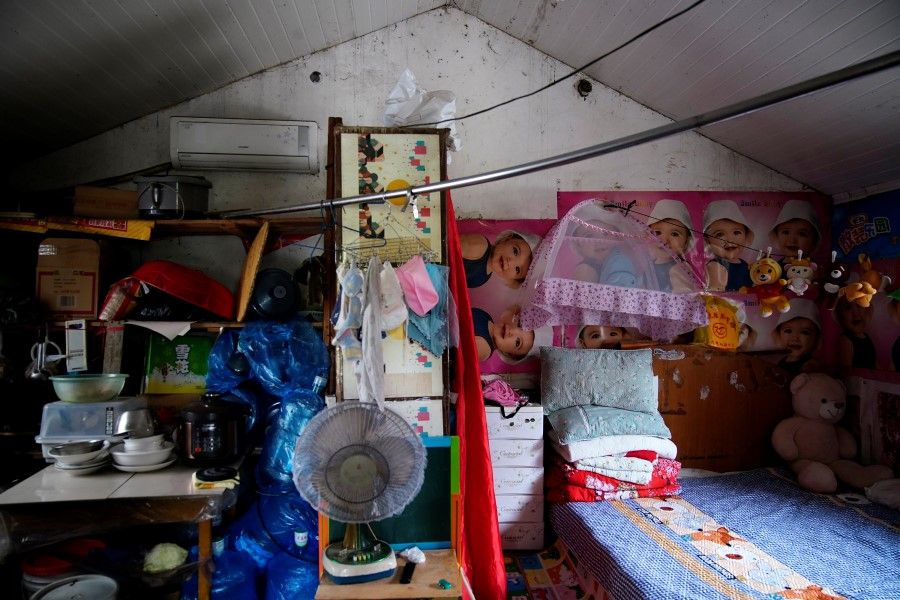While the US sets new goals for G7, China sets new goals for itself

The 47th G7 Summit concluded yesterday in the UK. Being the first time that the G7 leaders have met in person in two years, the meeting attracted much more attention than last year's online summit.
Meetings were also held between the G7 leaders and the leaders of Australia, South Korea, India (virtually) and South Africa, who were invited as guests. Following the G7 summit, there will also be the NATO and EU-US summits in Brussels on 14-15 June. At all these meetings, China was and will be an inevitable talking point.
Even though China was not directly mentioned in some of the communique statements, Chinese observers saw the US and other G7 countries reaching a consensus on the following points:
(i) working together on a Build Back Better World (B3W) initiative to meet the infrastructure needs of developing countries, that is, a plan that would rival China's Belt and Road Initiative (BRI); (ii) the importance of peace and stability across the Taiwan Strait and the need to "oppose any unilateral attempts to change the status quo and increase tensions"; (iii) the need to call on China to "respect human rights and fundamental freedoms, especially in relation to Xinjiang and those rights, freedoms and high degree of autonomy for Hong Kong enshrined in the Sino-British Joint Declaration and the Basic Law", which would exacerbate existing political and ideological opposition between the West and China; (iv) safeguard the freedom of navigation in the South China Sea; (v) call for a "timely, transparent, expert-led, and science based WHO-convened Phase 2 Covid-19 Origins study including, as recommended by the experts' report, in China"; and (vi) restrict and exclude China-made products in the high-tech field.

As the Joe Biden administration values unity and cooperation with its allies more than the Trump administration did, it is not too difficult for the US and its allies to reach the above consensus on paper. However, most of the goals are just a wish list. It would be difficult for countries with close economic ties with China, such as France, Germany, and Italy, to commit to the plan, and it would also be tough for the US to go all out as well.
The biggest problem is the source of capital.
According to a statement released on the White House website on 12 June, "Biden met with G7 leaders to discuss strategic competition with China" and proposed the establishment of a "values-driven, high-standard, and transparent infrastructure partnership led by major democracies to help narrow the $40+ trillion infrastructure need in the developing world".
Reuters reported that this infrastructure plan "could rival" China's multi-trillion-dollar BRI but it is "not immediately clear how exactly the plan would work or how much capital it would ultimately allocate".

The biggest problem is the source of capital. In recent years, members of the G7 have been facing soaring fiscal deficits. Biden's domestic US$2.3 trillion infrastructure plan was forced to be scaled down and was even met with strong opposition from the Republican Party. To rival China's BRI, Biden has now proposed a US$40 trillion global infrastructure initiative. Putting aside whether the US and its allies' hearts are really in the plan, amid tight domestic finances, the funds that the US and its allies such as Europe and Japan can provide, are big question marks.
G7's bark will be worse than its bite
As for issues such as Taiwan, Hong Kong, Xinjiang, and the South China Sea, as well as sending a new team to China to investigate the source of the coronavirus, and rejecting China's high-tech companies, the G7 can only go through the motions of stating their position; other than that, they have no means of taking any real action. And when it comes to the approach and extent of containing China, the G7 is not completely in agreement.
On 13 June, The Daily Beast reported that the G7 leaders had "squabbled" with Biden over China. It said the main aim of Biden's European tour was to show that the US "is back", but when Biden tried to get the G7 to sign a joint statement calling out China over Xinjiang, it did not go as he wanted.
The Wall Street Journal felt that some European leaders are not keen to oppose China, as they feel that it would be counterproductive and could complicate efforts to seek the Chinese government's cooperation on issues like climate change, trade and finance.

Overall, the G7 will have little real impact on China's politics, economics, and society. Following the global spread of the coronavirus, trade between China and the US, Europe, Japan, and even India has not shrunk, but has in fact grown, and it is unlikely that the US and its allies will be able to change the situation in the short term.
While the US has not achieved its aims by rallying its allies against China and it will be difficult to do so, China does feel enormous external pressure, and the best way to resist it is to take care of its own affairs.
The bigger challenge for China is how to resolve its obvious unbalanced domestic development, including the gaps between the rural and urban areas, and also the eastern and western regions as well as the northern and southern regions...
China boosts domestic strength
While the G7 was happening, China declared its support for establishing a common prosperity demonstration zone in Zhejiang, which will reach the income level of advanced economies by 2035, with basic public services equalised by 2025. The gap between urban and rural development, and the income and living standards of urban and rural residents will be narrowed, while the income-generating capacity and social welfare level of low-income groups will be significantly improved, with a significantly enlarged middle-income group. By 2035, Zhejiang province will have "basically achieved common prosperity".
The bigger challenge for China is how to resolve its obvious unbalanced domestic development, including the gaps between the rural and urban areas, and also the eastern and western regions as well as the northern and southern regions; there is still a huge gap in income distribution among various groups, and it is still a long way from achieving a modern society based on common prosperity.

A National Development and Reform Commission official said the authorities' aim is to implement reforms in Zhejiang to develop frameworks for objectives, operations, policies, and assessments that will drive common prosperity, which in turn will open the way, build experience, and provide an example for other places all over China to do the same.
Achieving common prosperity was the original aim of China's reform and opening up. Now, with the growing rich-poor gap and the pressure of "involution" (内卷, neijuan) weighing heavy on many young people so that they cannot see the future, for the first time the authorities are rolling out a blueprint and timeline in its strategy to achieve common prosperity, and is starting to conduct testing in Zhejiang - this is as significant as when it built the special economic zones in Shenzhen, as well as Pudong in Shanghai.
In other words, while the US is busy joining with its allies to deal with China, the latter continues to focus its energy mainly on domestic issues. This is the right choice for China, and the source of its strength in resisting pressure.
